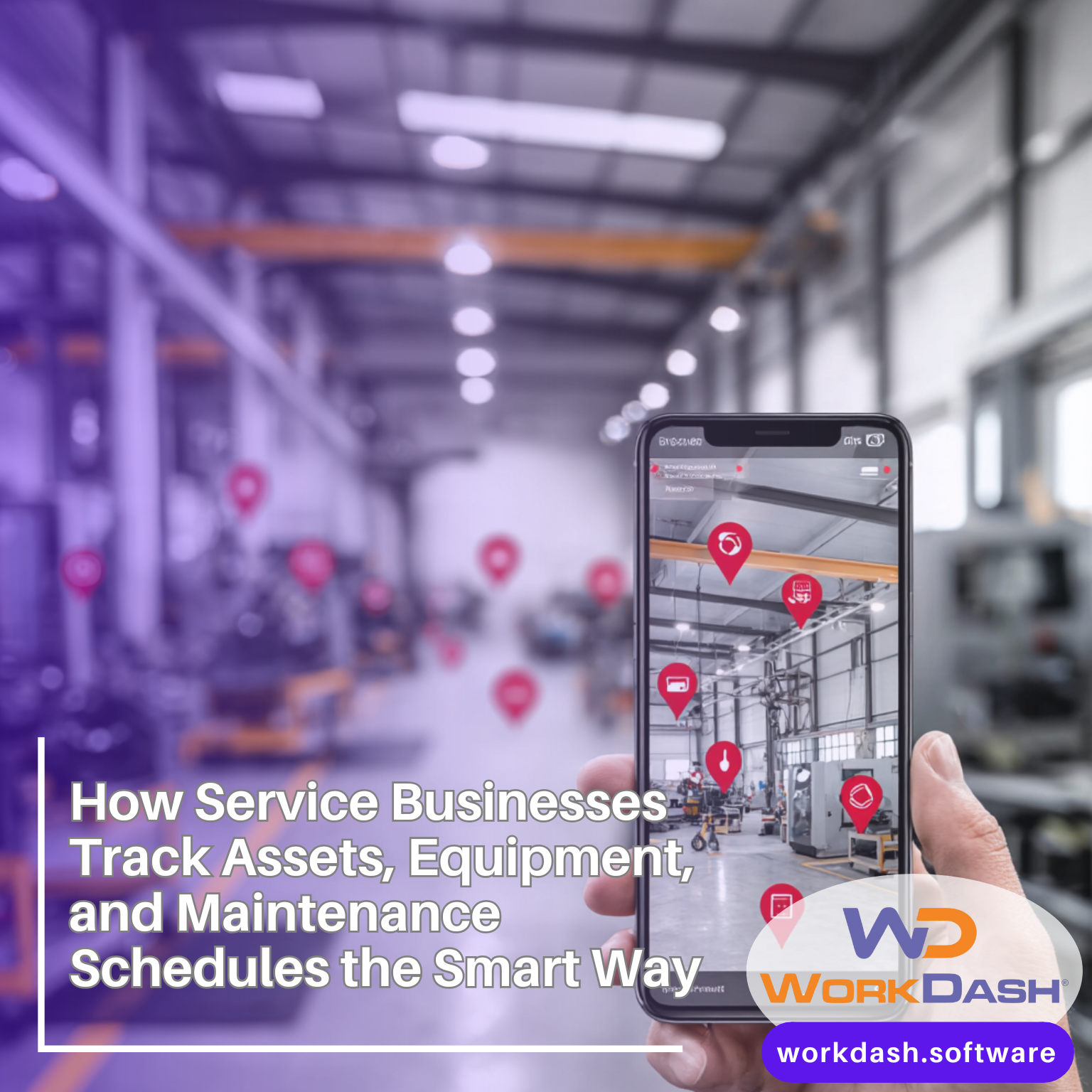Table of Contents
Client retention is one of the most crucial elements in building a successful and sustainable business. While attracting new clients is important, it’s far more cost-effective to keep the ones you already have. Repeat customers not only bring in steady revenue but also tend to spend more over time. Plus, loyal clients are more likely to refer your business to others, giving you free, word-of-mouth marketing.
In a competitive market, businesses that focus on retaining clients build a stronger foundation, reduce costs, and foster long-term growth. Happy clients stick around, and a focus on retention can help you stand out from the competition.
The Role of Customer Relationship Management in Retaining Clients
At the heart of client retention is relationship management. Building and maintaining strong relationships with your clients is key to ensuring they continue to choose your business. Relationship management is about more than just providing a service—it’s about creating genuine connections, listening to their needs, and offering consistent value.
Effective relationship management requires ongoing communication, understanding client expectations, and exceeding those expectations whenever possible. Whether it’s through personalised follow-ups, providing exceptional service, or anticipating client needs, the way you manage your relationships directly impacts client loyalty.
Key Concepts in Client Loyalty and Building Long-Term Relationships
Client loyalty isn’t something that happens overnight—it’s built on trust, satisfaction, and a consistent track record of delivering value. To cultivate loyalty, businesses need to focus on several key areas:
- Personalisation: Treating clients as individuals and offering tailored solutions that meet their unique needs.
- Consistency: Delivering high-quality service or products every time to build trust.
- Proactive Communication: Staying in touch with clients and addressing any concerns before they escalate.
- Added Value: Offering something extra, whether it’s rewards, special offers, or expert advice that sets your business apart.
Building long-term relationships requires businesses to go beyond just selling a product or service—it’s about being a trusted partner who is invested in the success and satisfaction of their clients.
Read: The Psychology Behind Customer Retention: Understanding Customer Loyalty
Why Client Retention is Critical
Client retention builds a stronger, more sustainable business. By keeping your existing clients happy, you’re laying the foundation for long-term success.
The Cost of Acquiring New Customers vs. Retaining Existing Ones
One of the biggest reasons client retention is so vital is the cost difference between acquiring new customers and keeping existing ones. It’s widely known that acquiring new clients can be anywhere from five to twenty-five times more expensive than retaining current clients. Marketing campaigns, onboarding processes, and promotional offers aimed at attracting new customers all add up.
On the other hand, retaining existing clients requires less financial investment and effort. These clients are already familiar with your business and have experienced your services or products. By focusing on building and maintaining relationships with existing clients, businesses can significantly reduce their overall costs and improve profitability.
How Retention Impacts Revenue and Profitability
Client retention has a direct impact on both revenue and profitability. Loyal clients tend to spend more over time, increasing their lifetime value to your business. In fact, studies show that increasing client retention by just 5% can boost profits by 25% to 95%.
Retained clients are also more likely to make repeat purchases and use additional services, contributing to higher average order values.
Furthermore, they’re more inclined to explore premium services or products because they trust your business and see the value in what you offer.
Long-Term Benefits of Loyal Clients
The long-term benefits of loyal clients go far beyond financial gains. Loyal clients become brand ambassadors, sharing their positive experiences with friends, family, and colleagues. Loyal clients are also more forgiving. If your business encounters a hiccup or makes a mistake, a long-standing client is more likely to give you the benefit of the doubt and allow you the chance to make things right. This flexibility creates a stronger, more resilient relationship.
Additionally, retaining clients means you’re able to collect more data on their preferences and behaviours over time. This information allows you to further personalise your services and tailor offerings to meet their specific needs, reinforcing their loyalty.
Key Strategies for Effective Client Retention
Client retention is crucial for long-term success. By implementing the right strategies, you can strengthen relationships and keep customers coming back.
Personalisation in Client Interactions
Personalisation is more than just a buzzword—it’s a powerful strategy for building strong client relationships. Australians appreciate a touch of personal service, so make an effort to address clients by name and remember their preferences. It’s about treating each client as an individual, not just another number.
Take the time to understand their needs and tailor your interactions accordingly. Whether it’s sending personalised follow-up messages or offering customised solutions, showing that you genuinely care about their unique situation helps build trust and loyalty. When clients feel valued and understood, they’re much more likely to stick around.
Proactive Communication and Regular Check-ins
Proactive communication is key to staying on top of client needs and preventing issues before they arise. Regular check-ins, even if things are running smoothly, show clients that you’re invested in their success. It’s not just about solving problems when they occur but about being there to offer support and guidance.
Consider setting up regular catch-ups or sending out updates to keep clients in the loop. This proactive approach helps build a stronger relationship and shows that you’re committed to their satisfaction. It also allows you to address any concerns early, before they become bigger issues.
Offering Consistent Value and Solving Pain Points
Consistently delivering value is crucial for retaining clients. It’s not enough to offer a great product or service once; you need to keep delivering high quality every time. Regularly assess what your clients need and make sure you’re addressing their pain points effectively.
Stay ahead of their needs by offering solutions that truly make a difference in their business or lives. By consistently providing value and solving problems, you reinforce their trust in your business and keep them coming back for more.
Reward and Loyalty Programs
Reward and loyalty programs are a great way to show appreciation for your clients and encourage repeat business. Consider implementing a program that offers discounts, special offers, or exclusive benefits for returning clients.
These programs not only incentivise repeat purchases but also make clients feel valued and appreciated. It’s a win-win: they get something extra for their loyalty, and you build a stronger, more profitable relationship. Tailor your rewards to fit your client base and make sure they’re genuinely enticing to maximise their impact.
By integrating these strategies into your business practices, you’ll build lasting client relationships and boost your retention rates. Personalisation, proactive communication, consistent value, and effective reward programs are all essential components of a successful client retention strategy
Understanding Customer Relationship Management (CRM)
What is Customer Relationship Management (CRM) and why it matters?
Customer Relationship Management (CRM) is all about managing your interactions with clients to build stronger relationships and drive business growth. In simple terms, CRM helps you keep track of everything related to your clients—from their contact details and communication history to their preferences and purchasing patterns.
CRM systems are essential tools for any business looking to enhance their client interactions. They centralise client information, making it easier for you to understand their needs, anticipate their expectations, and tailor your services accordingly. By effectively managing your customer relationships, you’re not just improving customer satisfaction but also paving the way for long-term business success.
Data-Driven Approaches to Managing Customer Relationships
Using data to manage client relationships is a game changer. With a CRM platform, you can gather and analyse a wealth of information about your clients. This includes their buying habits, interaction history, and feedback.
By diving into this customer data, you can identify trends and patterns that inform your strategy. For instance, if you notice that a client tends to make purchases around a specific time of year, you can tailor your marketing efforts to align with those patterns. Data-driven insights help you personalise your approach, address client needs more effectively, and make informed decisions that strengthen your client relationships.
Customising CRM Strategies for Your Business Needs
No two businesses are the same, so your CRM strategy should be tailored to fit your unique needs. Start by defining what you want to achieve with your CRM system. Are you looking to improve client communication, streamline your sales process, or enhance customer support?
Choose a CRM technology that aligns with your goals and integrates seamlessly with other tools you use, such as marketing automation or customer service platforms. Customise the CRM’s features to suit your business processes and ensure it provides the insights you need. This might involve setting up specific workflows, custom fields, or automated tasks that reflect how your business operates.
By customising your CRM strategy, you ensure that the system works for you and not the other way around. This tailored approach helps you manage client relationships more effectively, leading to better client satisfaction and improved business outcomes.
Building Strong Relationships with Clients
Active Listening and Understanding Client Needs
Active listening is a crucial skill for building strong client relationships. It’s not just about hearing what your clients say but truly understanding their needs and concerns. By giving your full attention and asking the right questions, you can uncover their real pain points and desires.
Make sure to listen carefully to both what your clients are saying and what they’re not saying. Pay attention to their tone, body language, and any underlying issues they might hint at. This approach helps you tailor your solutions more precisely and shows clients that you genuinely care about their needs.
Creating a Client-Centric Culture
A client-centric culture is all about putting your clients at the heart of everything you do. It starts with a mindset shift within your business—everyone, from the top down, should be focused on delivering exceptional client experiences.
Encourage your team to adopt a client-first attitude in their daily interactions. This means prioritising client needs, being responsive, and consistently looking for ways to improve the client experience. When your entire organisation is aligned around client satisfaction, it leads to stronger relationships and higher levels of client loyalty.
Delivering Exceptional Customer Service
Exceptional customer service goes beyond just meeting expectations; it’s about exceeding them. To deliver outstanding service, ensure that every interaction with clients is positive, helpful, and memorable.
Train your team to be knowledgeable, approachable, and solution-oriented. Address client inquiries and issues promptly and effectively. Going the extra mile, such as offering personalised recommendations or following up to ensure satisfaction, can make a huge difference in how clients perceive your business. Exceptional service not only retains clients but turns them into loyal advocates for your brand.
Managing Expectations and Exceeding Them
Managing and exceeding client expectations is key to building strong, lasting relationships. Start by setting clear, realistic expectations about what your clients can expect from your products or services. Be upfront about any limitations and always deliver on your promises.
But don’t stop there—aim to go above and beyond. Surprise your clients with little extras, such as a thoughtful follow-up message or an unanticipated discount. By consistently exceeding expectations, you create a positive impression that can turn satisfied clients into enthusiastic supporters of your business.
By focusing on active listening, fostering a client-centric culture, delivering exceptional service, and exceeding expectations, you’ll build robust, lasting relationships that benefit both your clients and your business.
Common Challenges in Client Retention and How to Overcome Them
Identifying Signs of Client Disengagement
Spotting the early signs of client disengagement is crucial for taking proactive steps to retain them. Look out for subtle indicators such as reduced communication, fewer purchases, or delayed responses. If clients aren’t engaging as much as they used to or are showing less enthusiasm, it might signal a problem.
Regularly review client interactions and track engagement metrics to identify patterns of disengagement. Use CRM tools to monitor changes in client behaviour, such as declining interaction frequency or a drop in purchase activity. Early detection allows you to address issues before they escalate, helping you stay connected and responsive to your clients’ needs.
Addressing Negative Feedback and Improving Client Satisfaction
Negative feedback is an opportunity in disguise. When clients voice their concerns, it’s a chance to address their issues and improve your service. Approach negative feedback with an open mind and a problem-solving attitude.
Respond promptly and empathetically, acknowledging their concerns and taking responsibility where necessary. Work with the client to find a solution that meets their needs, and use their feedback to make meaningful improvements. By showing that you value their input and are committed to resolving issues, you not only fix the immediate problem but also enhance overall client satisfaction.
Preventing and Managing Client Churn
Client churn is the rate at which clients stop doing business with you. It is a challenge that can impact your bottom line. To prevent and manage churn, start by understanding why clients leave. Use exit surveys, feedback forms, and data analysis to identify common reasons for client attrition.
Once you’ve pinpointed the causes, take proactive measures to address them. This might involve improving your service offerings, adjusting your pricing strategy, or enhancing communication. Implement loyalty programs or special incentives to reward long-term clients and keep them engaged.
In cases where clients do churn, handle it gracefully. Conduct exit interviews to gather insights on their reasons for leaving and use this information to refine your approach. By learning from each experience, you can continually improve your retention strategies and reduce future churn.
By identifying signs of disengagement, addressing negative feedback effectively, and managing client churn proactively, you can overcome common challenges in client retention and build stronger, more resilient client relationships.
Tools and Technology for Client Retention and Relationship Management
In today’s competitive market, having the right CRM tools and technology is crucial for retaining clients and managing relationships effectively. From CRM systems to automation tools, technology can streamline processes, improve communication, and help you stay connected with your clients. WorkDash, an all-in-one business management platform, offers a range of features designed to help businesses manage client relationships with ease and ensure long-term loyalty.
Customer Relationship Management or CRM Software Features to Look For
A robust Customer Relationship Management system is essential for building and maintaining client relationships. When choosing a CRM, look for features such as contact management, interaction tracking, and automated follow-ups.
These tools help you stay on top of client interactions and provide personalised service. WorkDash stands out with its intuitive interface, lead management tools, and integrated communication channels, making it easier to nurture relationships and drive retention.
Automation Tools for Improving Client Retention
Automation tools can save time and help you stay consistent in your client communications. Automating routine tasks like sending follow-up emails, scheduling appointments, and generating reports allows you to focus on more strategic aspects of client management.
WorkDash’s automation capabilities ensure you never miss an opportunity to engage with clients, helping you build stronger relationships and keep them coming back.
Read: Enhancing Customer Service Efficiency through CRM Automation
Data Analytics and Metrics for Tracking Retention Success
Tracking client retention metrics is key to understanding what’s working and where improvements are needed. Data analytics tools help you measure client satisfaction, engagement levels, and churn rates, providing valuable insights into your retention efforts. WorkDash’s CRM software offers built-in reporting and analytics tools that give you a clear picture of your client relationships, allowing you to make data-driven decisions to improve retention strategies.
By leveraging tools like WorkDash’s Customer Relationship Management , automation, and data analytics, you can significantly enhance your customer relationships and retention efforts.
Client Retention Metrics: What to Track
Tracking the right metrics is essential for understanding how well you’re retaining clients and identifying areas for improvement. By monitoring key data points, you can gain insights into customer satisfaction, loyalty, and potential risk of churn. Keeping an eye on retention metrics allows you to adjust your strategies in real-time, ensuring stronger long-term relationships.
Key Retention Metrics: Customer Lifetime Value (CLV), Churn Rate, and Net Promoter Score (NPS)
Customer Lifetime Value (CLV), churn rate, and Net Promoter Score (NPS) are three core metrics that give you a clear picture of client retention. CLV measures the total value a client brings to your business over time, while churn rate tracks the percentage of clients who leave. NPS, on the other hand, measures client loyalty by gauging how likely they are to recommend your Fbusiness to others. Monitoring these metrics can help you identify trends and make informed decisions to improve retention.
Using Feedback Surveys to Enhance Client Retention Strategies
Client feedback surveys provide direct insights into how clients feel about your business, products, or services. Regularly gathering and acting on feedback helps you pinpoint issues and address them before they lead to churn. By leveraging feedback to make improvements, you demonstrate to clients that you value their input, which fosters loyalty and strengthens retention.
Tracking Customer Data: Engagement and Interaction Frequency
Engagement and interaction frequency are critical indicators of how connected your clients feel to your business. Tracking your customer data like how often clients engage with your content, products, or services can highlight early signs of disengagement. With tools like WorkDash’s CRM, you can easily monitor client interactions and use that data to maintain strong, ongoing relationships.
Wrapping up:
Investing in customer satisfaction is more than just good business sense—it’s the key to long-term success. Happy clients are loyal clients, and they’re more likely to return, refer others, and become advocates for your brand. By focusing on building strong customer relationships, you not only reduce churn but also build stronger relationships that drive growth and profitability.
Customer satisfaction impacts every aspect of your business, from repeat purchases to word-of-mouth marketing.
Tools like WorkDash’s CRM software make it easier to track client interactions, address issues proactively, and deliver exceptional service. When you prioritise satisfaction, you’re not just keeping clients—you’re building a community of loyal supporters who will help your business thrive for years to come.





